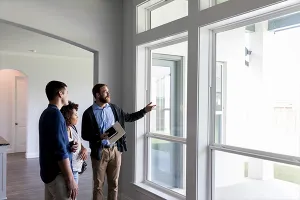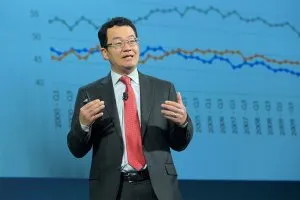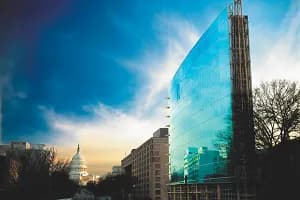Commercial Overview
The recovery in the commercial real estate market that started in the second half of 2021 is continuing into the first quarter of 2022. All core commercial sectors ―multifamily, office, industrial, and retail ―experienced net positive absorption during the last three months through February. As such, rents and property valuations continue to increase across the four core property markets.

Multifamily Properties
In the multifamily market, apartment demand is still outpacing supply, even as net absorption has slowed to 575,857 units compared to the 12-month absorption of 700,000 units in 2021. However, net absorption (demand) is outpacing the number of net delivered units (supply) of 417,000 units. Apartment vacancy rate remains low, with a vacancy rate of 5%, pushing up the average asking rent to 11.1% year-over-year in 390 markets tracked by CoStar®.

Office Properties
Office occupancy continues to rise, with 4.9 million square feet absorbed in the three months through February, bringing the total absorption to 24.1 million square feet since 2021 Q3. However, total occupied space is still 110 million square feet below the level of 2020 Q1 as New York, Chicago, Washington DC, and Los Angeles continued to shed office space. Nationally, office asking rents rose 0.7% year-over-year, but this modest rent growth is masking the strong rent growth in the South and West regions (Mountain states) particularly in Florida which has eight of the 40 top metro areas with the fastest rent growth of over 3%. Office rents are rising in 97% of 390 markets.

Industrial Properties
In the U.S. industrial sector, net absorption outpaced supply in 2021 and as of the past three months ending February 28, with 92.6 million square feet absorbed in comparison to the 90.3 million square feet supplied. The average asking rent across 390 markets increased by 10.1% year-over-year as of February. Asking rents continue to face upward pressure amid very tight industrial space conditions, with positive rent growth in all 390 covered metros.

Retail Properties
In the U.S. retail sector, net absorption continues to outpace supply. Despite dampened overall U.S. consumer spending and continued supply chain issues, retail is continuing to power through these obstacles. As of the three months ending in February, 27.3 million square feet has been absorbed while supply totaled just 11.5 million square feet, with the retail vacancy rate declining to 4.5% while the overall asking rent rose 3.5% year-over-year.

Hotel Properties
While the hotel property market has improved compared to one year ago, the emergence of the omicron variant in November stalled the recover of hotel property market. Hotel occupancy was just at 52.2% in February, which is still below the occupancy of 56.9% prior to the pandemic in February 2020.
Barring severe economic fallout arising from the Russia-Ukraine crisis, the outlook for the commercial real estate market remains positive even amid rising interest rates. Rising mortgage rates increase rental demand that will sustain the ongoing rent growth. Worker re-entry, even if on a hybrid mode, will increase office absorption. Slower inflation that will head towards 5% by the end of the year will encourage consumer spending. Markets with rising population and migration such as the Sunbelt and Mountain states are better poised to see sustained rent growth and rising commercial valuations. Market trends could take on a different course depending on the economic impact of the Russia-Ukraine crisis and the ensuing monetary response.









